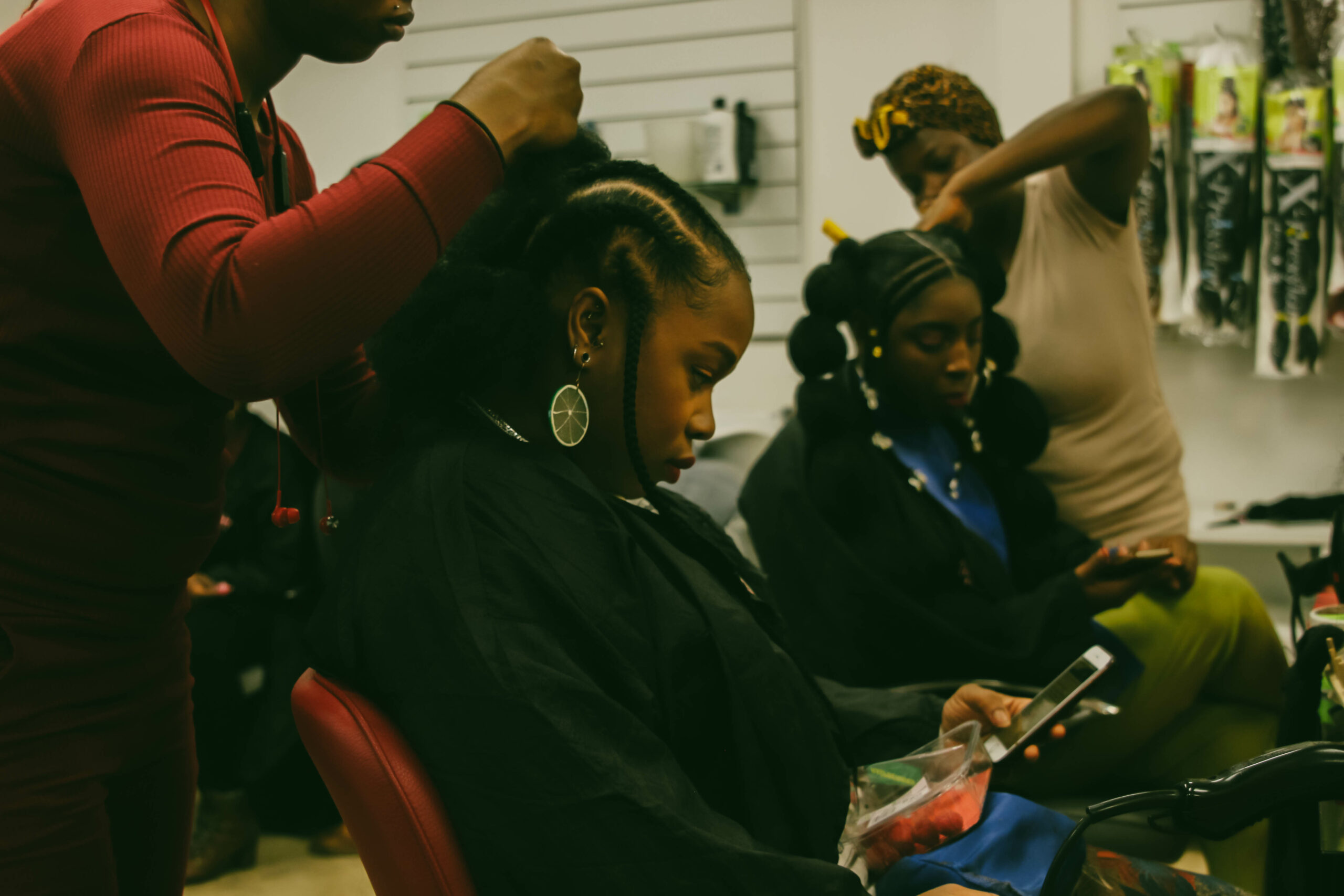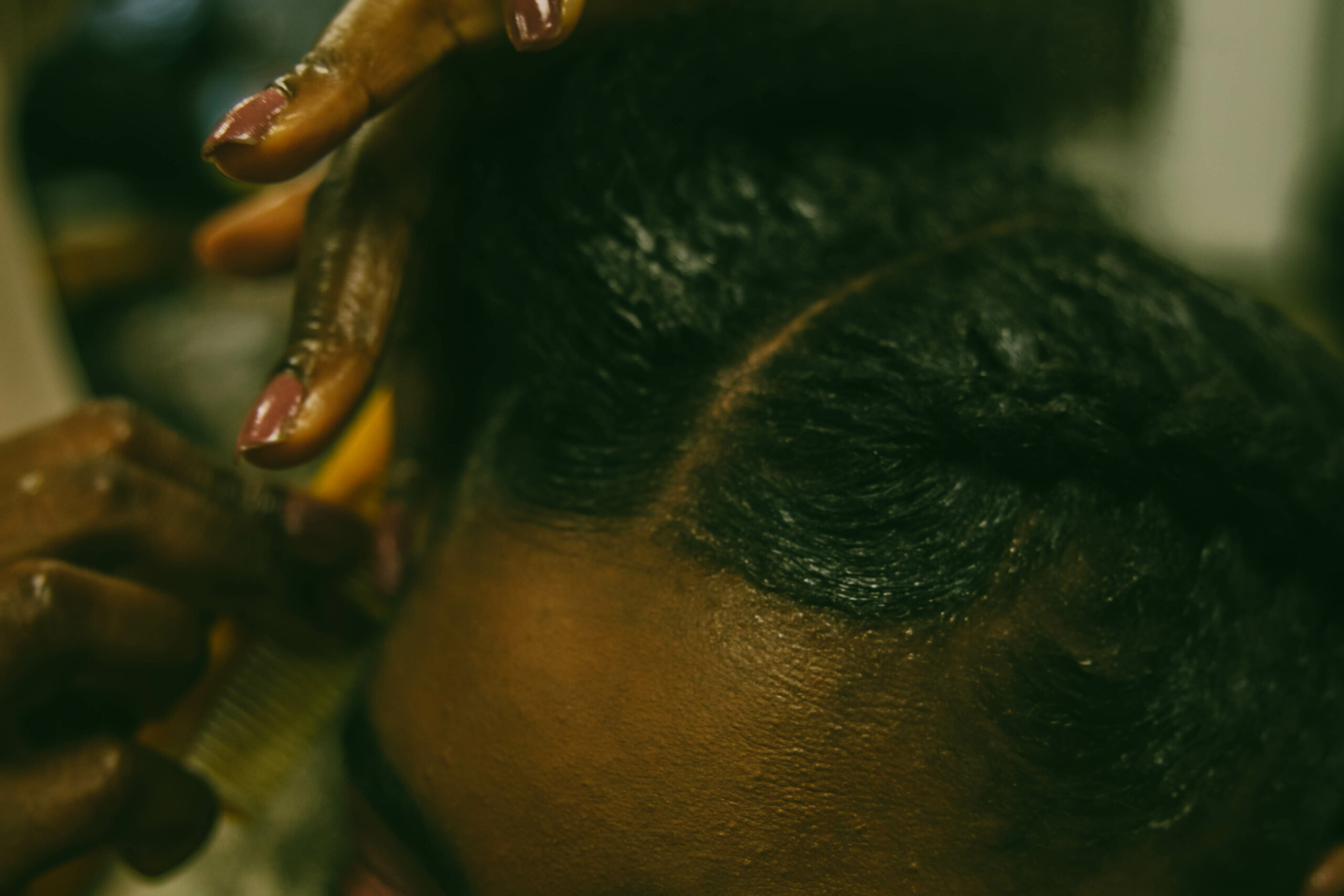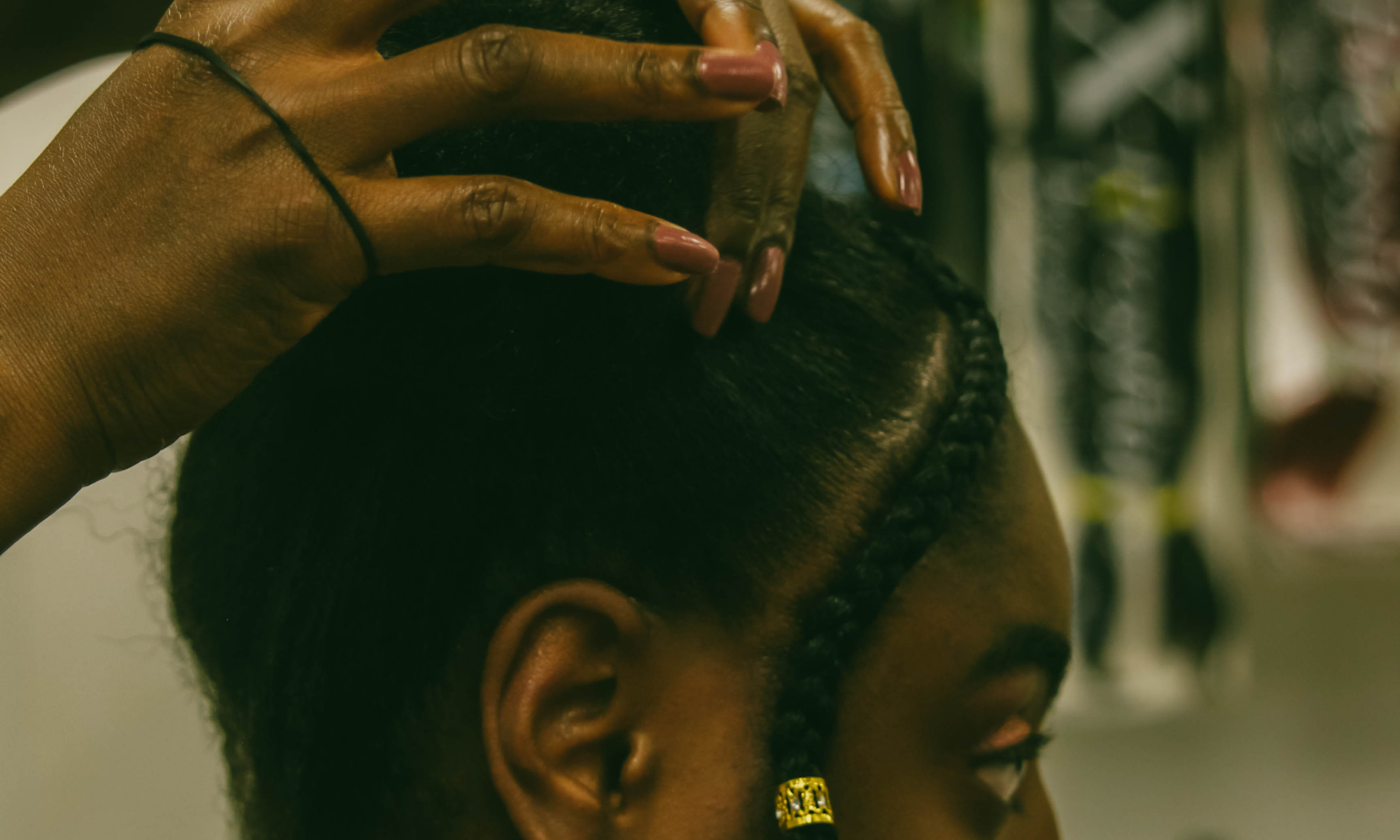
Photography by Yossy Akinsanya / Peckham Palms
Afro Answers: why the ‘porosity float test’ and hair repair masks made from food are a scam
Trichologist Ebuni Ajiduah is back to dispel the myth that you can test the porosity of your hair by putting it in a glass of water and explains why putting egg on your hair is never a good idea.
Ebuni Ajiduah
29 Mar 2020
Now we have all been advised to stay home because of coro coro, you may find yourself with more than enough time to finally give your hair some TLC, especially as hair salons are closed and your cupboards are fully stocked.
We all miss the feeling of our hair being pampered and as you try to recreate this at home on a budget, I have a few tips that will spare your strands (and pockets) in the long run. Since the lockdown started, I have had the overwhelming urge to do something drastic to my hair but as the end is unknown I can’t risk having to emerge without my hair having recovered, so trust me I GET IT!
Don’t put mayo, avocado or egg on your hair
“Treatments” are a staple of afro hair care, performed at the salon after a chemical process such as a perm or to rejuvenate hair which has been hibernating after a long protective style.
For those unable to frequent the salon as often, home care has become big business as you can purchase professional level products at very affordable prices. Even with access to tabletop steamers and “salon only” ranges, many opt for kitchen cosmetics and the trusty plastic bag. As the cosmetics industry comes under fire for its dodgy dealings and the public become more aware of the dangers of toxic chemicals, many people are opting for more “natural alternatives”.
During my stint as a mobile stylist, I have arrived at more than one house of a client desperately trying to deep condition her hair before a protective style using the holy trifecta of egg, mayo or avocado. A lot of these clients ending up picking out scrambled eggs, having “cooked” their treatment whilst rinsing. The food combinations are endless and there is often a false equivalence made between the potency of an item’s internal benefits and its topical application.
It’s true that the cuticle of the hair can become damaged and we can try to resolve this by using proteins to patch and repair the structure. But the problem is, the particles in foods are way too big to penetrate and be of any use in the hair. Imagine trying to fit an elephant in a mini, it just won’t work!
Rather than whole proteins, the hair needs amino acids, which are the building blocks of proteins. This is exactly how it works in the body, foods are digested before they can be used. As your hair doesn’t have a digestive system it is best to EAT your foods and build healthy hair from the inside out.
The fake float test
As with many subcultures, the natural hair world comes with its own unique jargon and in a bid to understand and share, true meanings can become lost in translation.
“Porosity” is a word that all hairstylists are familiar with but, in the natural hair movement, it has skyrocketed in seeming importance which has left many professionals confused and brands ready to exploit. Now, brands are “creating” products for naturals at each end of the spectrum, like the Shea Moisture baobab and tea tree oils “low porosity” shampoo and conditioner.
The porosity of hair relates to the outermost layer of the strand, called the cuticle. This layer is formed by overlapping cells and resembles roof tiles. Its function is to prevent excess moisture from leaving the hair. In healthy hair, the “scales” of the cuticle will lie flat and give a shiny look, but cuticles can become damaged due to chemical processes such as colours, relaxers and UV damage.
Most hair will fall into the “normal” range for porosity and become more porous towards the ends of the strand. This occurs because it has been subjected to more trauma i.e. sun, mechanical, heat or chemical damage. Signs of changes in porosity can be rough, frizzy hair that loses moisture quickly. The ideal place is somewhere in the middle. You can avoid increasing porosity dramatically by using less heat, brushing carefully and having chemical treatments carried out by a professional.
According to a lot of online naturalistas, you can test the porosity of a hair by dropping a strand in water and observing if it floats or sinks. However, this is inaccurate for a few reasons:
• If the hair is coated in products (especially oils) these will repel the water causing it to float
• The porosity can change on a single strand and will generally be more porous toward the tip, which is the oldest part of the hair
• The surface tension of the water may not be broken as the hair is dropped and it will float or sink if it does
• The hair can only absorb so much moisture preventing it from becoming waterlogged
You only really need to know your porosity if you are having a chemical service such as a colour, as it may affect the final results (this is the reason why colouring should always be done by professionals). Day-to-day it really doesn’t need to be on your radar, or be the deciding factor for product choices. I very rarely come across low porosity hair – just hair that isn’t moisturised well.
If you struggle to keep your hair hydrated, use a spray bottle to dampen then apply Big Hair – Milk or Trepadora – babassu quench leave-in curl primer. Both products are made by black women in the UK. Some DIY (and cheaper) ingredients you can use are humectants such as gylcerin, which will attract water from the atmosphere.
This is part of the Afro Answers column. Next time, Ebuni will be explaining why hair types (4C etc.) aren’t what they seem and what to do if you are experiencing hair loss. If there are any afro hair questions you would like answers to in a future column, email them to charlie@gal-dem.com with the subject line “Afro Answers”









